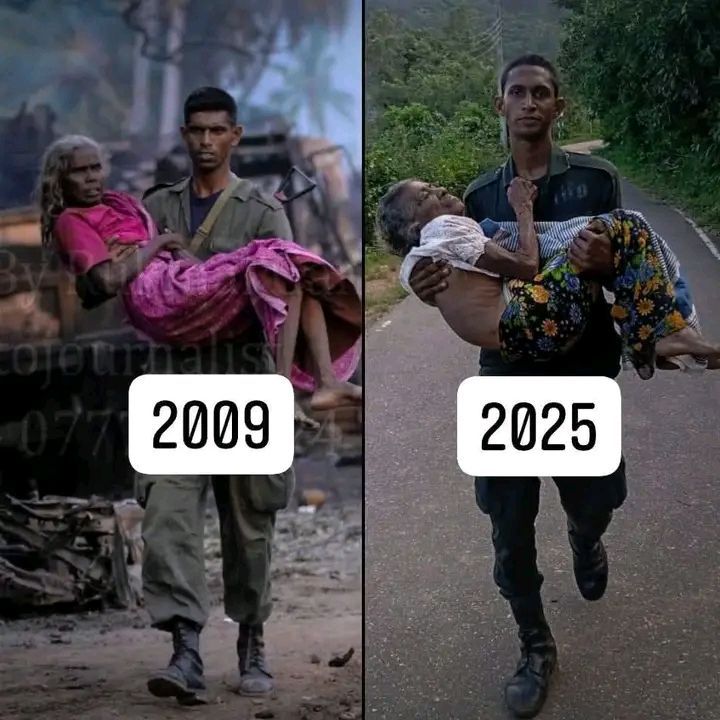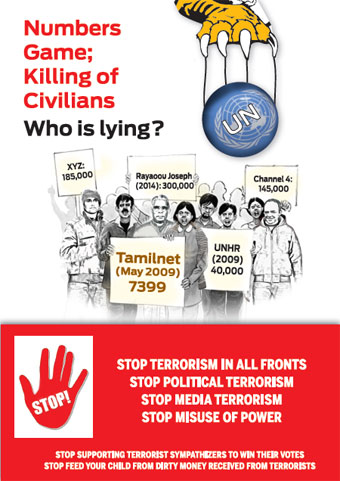Walter Jayawardene: journalist, patriot, activist
The hardest thing about saying goodbye to a departed one is not being able to say goodbye, as with flowers and incense, a last long look, prayers for the journey ahead, or a final touch.
Yet, that’s how family and friends will bid farewell to Walter Jayawardena, journalist, lawyer, and well-known activist in the Sri Lankan community in the U.S., who passed away on Sunday May 3, 2020.
The funeral service will be conducted online via Zoom by the Sarathchandra Buddhist meditation center in North Hollywood on Saturday starting 5:00 p.m.
The subdued farewell will be a contrast to the high energy and gusto that were hallmarks of Walter’s life.
Walter Jayawardena was born May 22, 1942 in the Badulla District. His father worked at a tea estate as head clerk and was also a local postmaster: his mother a housewife. Early education at St. Bede’s College, Badulla, and then to Bandarawela Maha Vidyalaya for A- Levels.

With English language fluency, he quickly snagged a teaching job at a local school. And he might have spent his entire working life being yet another government teacher helping rural children grapple with the frustrating vagaries of the Queen’s language, if not for his passion for writing.

While teaching, he was a correspondent for Lake House and then for the Times of Ceylon where he was eventually signed on as a staff reporter for Lankadipa, a leading Sinhala newspaper of the time. For several years, he was also a correspondent for Asiaweek a Hong-Kong-based English-language weekly news magazine, a subsidiary of Time Inc.
In 1977, he married Lakshmi Silva, a trained nurse who was working in the Middle East. The following year he was awarded the University of Hawaii’s prestigious Jefferson Fellowship of the East West Center and visited the U.S. for the first time.
Not long after that, with the Times of Ceylon in financial trouble and on the verge of collapse (eventually nationalized), Walter and Lakshmi decided to make America their home. They settled down in Los Angeles and their son Yaswin was born in 1982.
It was in the 1980’s, with the Tamil Eelam war gaining momentum, that Walter emerged as the champion of the Sinhala side of the tug-o-war against the LTTE.
1983 Clashes
A turning point was a clash with a local socialist group holding a pro-LTTE rally in downtown Los Angeles in 1983. Immediately after that skirmish, the Sinhalese group led by the late Keerthi de Silva regrouped at Walter’s Hollywood apartment, and thus was born the Sinhala Defense League (SDL). Bold nomenclature and the first association of its kind in the US. Walter described it as “a vigilante political group.”
Keerthi was named president, Walter assumed the post of secretary. Sunil Alwis, who went on to set up the popular news website www.go2lanka.com, subsequently held that position. In a few months, SDL attracted hundreds of Sinhalese in the Los Angeles area and for the next two decades remained a constant thorn on the side of pro-LTTE support groups.
In June 1987, SDL hosted the Biannual Convention of Sri Lankan American Associations, attended by representatives from several Sri Lankan activist groups in the U.S. Chief guest at the event was the late Mr. Lalith Athulathmudali. As national security minister, he was on a diplomatic mission to the U.S. to meet with legislators and American media in the midst of escalating tensions between Sri Lanka and India. Other speakers at the SDL convention, held at Cal State Los Angeles, included Tom Marks, a retired US intelligence officer, Dr. A.A.W. Amerasinghe of Georgia, and Dr. Reginald Rajapaksa, a history professor at the University of Pennsylvania.
Live Elephant
Not one to shy away from conflict and confrontation, Walter became the public face of the SDL, demanding to be included on TV shows, that would have otherwise have been content to feature just the Tamil Eelamists, and appearing at the forefront of several anti-LTTE demonstrations.
For a while, SDL was everywhere, sometimes attracting media attention by its out-of-the-box tactics. Notably, SDL’s 1984 Los Angeles rally on Wilshire Boulevard highlighting Indian intervention in Sri Lanka made it to the local news. An attention-grabbing unique prop at the protest was a live baby elephant.

Telephone news service
In the highly-charged political atmosphere of 1983-1984, Walter set up a weekly telephone news service with the stated purpose of countering Eelam propaganda. Those were pre-www days when news was hard to come by, and whatever trickled this way via Reuters/AP/AFP was invariably slanted to favor the Eelam platform. At the time, in a world dominated by large multi-national conglomerates such as AT&T, telephone access even within the US was costly. Yet, Sri Lankans eager for information were willing to shell out exorbitant fees to dial-in to the weekly roundup of hot news. To make it easy on his listeners, Walter would drive more than 50 miles each way from his home to make the weekly recording in Los Angeles where access was cheaper for local residents.
Along the enduring legacies of Walter’s activism is the yearly Christmas Catholic mass in Sinhala at St. Catherine Laboure Catholic Church, in Torrance, California.
Father Angelito Peries
The event had its nativity in the mid-1980s following a series of meetings mediated by Archbishop Roger Mahoney and officials of the Los Angeles Archdiocese to bring reconciliation between the Sinhalese and Tamils in the area. Events were set in motion when the SDL held a protest outside St. Mary’s Church in Whittier (about 20 miles southeast of Los Angeles) in 1984. The group accused church leader Father Angelito Peries of lobbying support for the Tigers by characterizing the Eelam war as a Buddhist-Catholic conflict. Among Peries’ outrageous statements to the media was the accusation that Sri Lankan security forces were “killing any and all Tamils labeling them terrorists and separatists.”

Unable to ignore the growing complaints against Peries, the Archbishop called for joint discussions. Besides Walter, the Sinhalese were represented by the late Fr. Wilathgamuwa, Mr. Joseph Silva, and several Catholics who were SDL members. The church leaders’ recommendation that the two sides find common ground for reconciliation by participating at a religious ritual such as Christmas didn’t go down well with the Tamil representatives. It did, however, open a new window for Catholic-Buddhist relations. SDL organized a Christmas Day mass in Sinhala at St. Anthony Catholic Church in El Segundo, attended by Buddhist monks and made colorful by a Kandyan-dance perahera of children leading Father Wilathgamuwa to the service. The annual event, moved to Maria Regina Catholic Church in Gardena and then to St. Catherine Laboure, and continues to date, always ending with a traditional Sri Lankan lunch and get-together.
“Ranil Resign”
This roundup of Walter’s life and career would not be complete without mention of the controversial protest he staged at the Los Angeles Sri Lankan Consulate General’s Independence Day celebration in 2002, in the presence of local religious dignitaries and the late Mr. Anura Bandaranaike who was visiting at the time.
Just as Deputy Consul Mr. Dharmasena completed presenting President Kumaratunga’s message and announced the reading of Prime Minister Wickremasinghe’s message, Walter struck. It was a dramatic moment when he sprang up shouting loud and clear in Sinhalese that he too had a message. “ඔහොම ඉන්න, අපිටත් යමක් කියන්න තියනවා.“ While the audience looked on in disbelief, Walter continued in Sinhala: “Thousands of Tamil children are being abducted from their homes by the terrorists, he [Prime Minister Wickremasinghe] is not doing anything to stop it and is simply watching. We demand his immediate resignation.” Louder than his voice was the unforgettable “Ranil Resign” placard he displayed. Consul General Tissa Wijeratne, visibly shocked, quickly tried to restrain him from saying anything further and led him away. “We are boycotting this event and we are walking out in protest,” Walter shouted as he stormed out of the building followed by members of the SDL.
There was mixed reaction from the community, with many viewing it as yet another instance of Walter’s not-niceness. Only a few, a handful to be precise, applauded, comparing it to other “not-nice” events from Sinhalese history, the 1815 tearing down of the British flag by Ven. Wariyapola Sri Sumangala, for instance.
London Days
While journalists generally keep their political sympathies in check or make a pretence of neutrality, Walter was quite open about his affiliations. At the Times of Ceylon, and in subsequent years, he strongly supported the United National Party (UNP), even addressed its political meetings. A turning point was 1987 and the signing of the Indo-Sri Lanka Accord. While initially seeming to support it, he was eventually disappointed and veered left, emerging as a staunch supporter of Mahinda Rajapaksa. That volte-face eventually led to his appointment in 2007 to the Sri Lankan High Commission in London as Minister/Counsellor (Information).
The switch from freelancing to treading the narrow confines of a government-controlled gig, from journalist to PR officer, is not an easy vault. To borrow an analogy from Maya Angelou’s “I Know Why the Caged Bird Sings,” it’s a position where “his wings are clipped/his feet are tied.” Walter soon faced this reality in London where he clashed with authority and had a difficult time adapting.
Back in Los Angeles after that assignment, Walter seemed to settle down to a quieter lifestyle. The war was over, the drums mute, the time for the type of political activism he expounded long gone. In the final years, he became reclusive, refusing to see people, taking up Buddhist meditation and seemingly disinterested in the world outside the nursing home where he spent his last days.
When it came on Sunday May 3, 2020, it was a very quiet ending to a long life of sound and fury.
On a personal note:
I first met Walter when I was a rookie reporter at the Times of Ceylon, around 1974. He was, to say the least, a very noticeable presence on the editorial floor where he worked alongside my late husband Deeptha. My early impression of Walter was of a man in a hurry to get somewhere, seemingly purpose-driven and not hesitant to arrive at meetings even if not invited. Which was how I first set eyes on him, when he simply sauntered into the office of an official at the Education Department in Slave Island with whom I was conducting an interview! Walter, as all who knew him will agree, marched to his own beat. While sharing a common platform as Sri Lankan expatriates and journalists, we were not always on the same page. However, despite disagreements, we did remain on friendly terms for a good part of the past four decades.
By Hassina Leelarathna
132 Viewers








